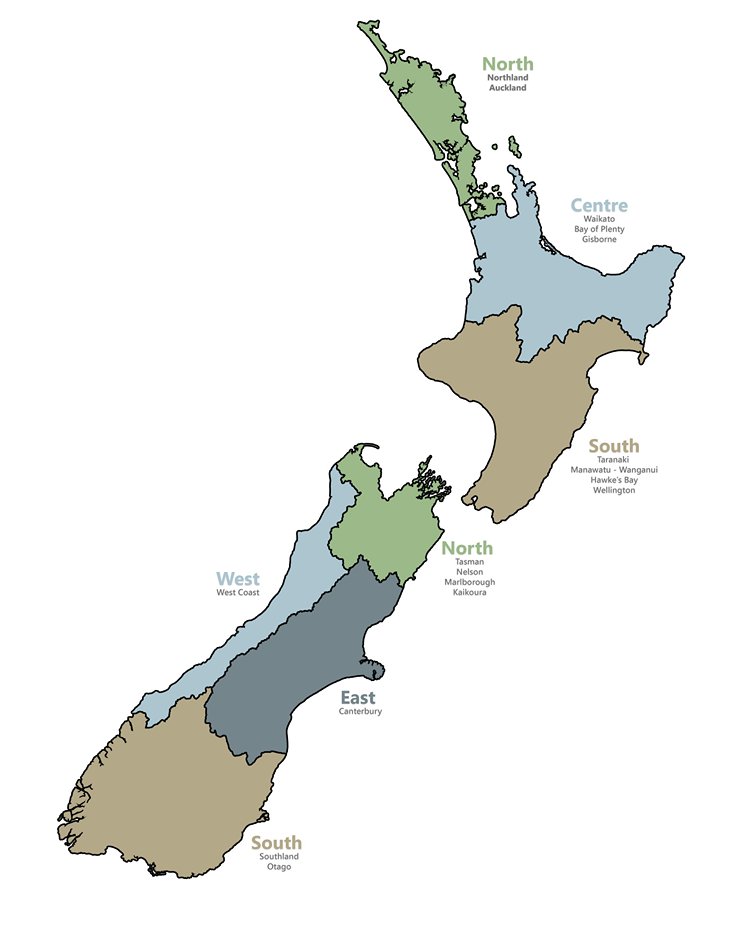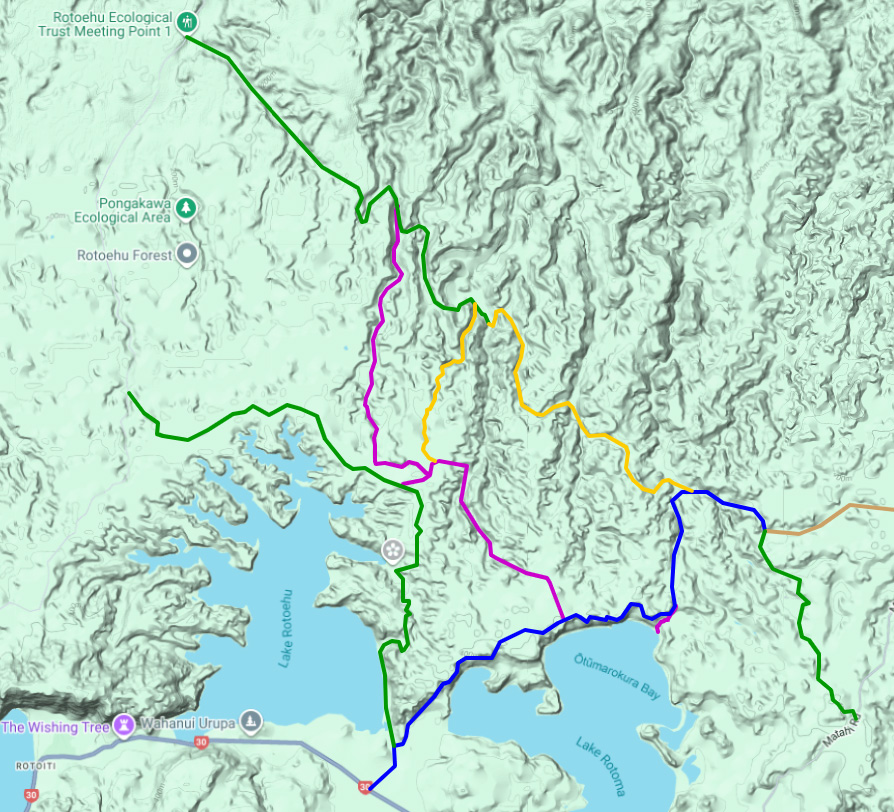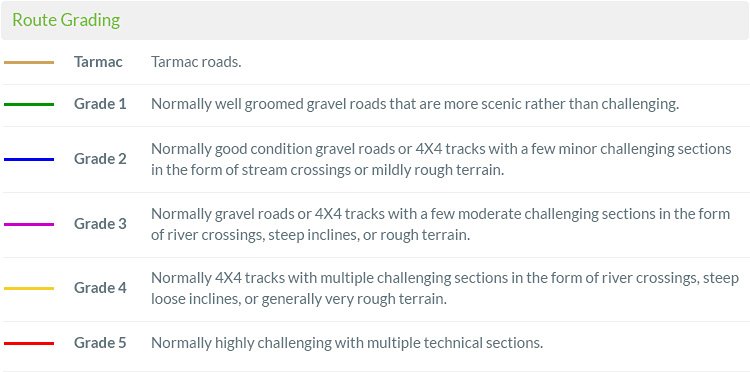Track Scout Handbook
This handbook provides info about the Adventure Guide Track Scouts, and how you can apply to join the team.
About Track Scouts
The Track Scout team is made up of people that are passionate about exploring remote places, have great knowledge of New Zealand’s remote track network, and enjoy sharing track info with fellow adventurers through the Adventure Guide platform.
Roles of a Track Scout
- contribute new routes for the Adventure Map
- contribute photos and reviews of tracks
- contribute updates on track statuses if you notice a change in grade, open status, etc
Benefits of being a Track Scout
- become part of a great team that provides the best resource for fellow adventurers
- get free access to the Adventure Guide website and Navigator app
- get a Track Scout sticker
- be featured on the Adventure Guide Track Scouts page
- be featured on all the website pages that feature the routes you have scouted
- get invites to organised rides for the Adventure Guide Track Scout team
While there is no official financial remuneration for being a Track Scout, as Adventure Guide grows, Track Scouts will receive periodic incentives in appreciation of their valuable contributions.
Prerequisites
- Be passionate about exploring the remote places of New Zealand
- Get out and about exploring fairly regularly
- Have good knowledge of roads and tracks that benefit the adventuring community
- Know how to log a GPX route (with a GPS or phone) and share it
- Have a genuine interest in positively helping the adventuring community
- Not be involved with any website/app/resource that competes with Adventure Guide
How to Become a Track Scout
First, read through this handbook. If being a Track Scout sounds like a good fit for you, express your interest in becoming a Track Scout on the Adventure Guide contact form. Make sure you include what territory you’d like to scout tracks for.
Next, Josh will be in contact with you and walk you thorough the process of providing some sample routes. Once you've submitted your sample routes, Josh will catch up with you to make sure you are happy with the process. If both parties are happy, you’ll be officially welcomed onboard as a Track Scout!
Once you reach 10 submitted routes, you'll be featured on the Adventure Guide Track Scouts page.
Track Scout Territories
The North Island and South Island are broken up into Territories. Each Track Scout will have a Home Territory based on where they live. Eg if you live in Christchurch, your Home Territory will be South Island – East.

Each Territory will have around two to five Track Scouts - this depends on the number of tracks in each Territory, and how frequently each Track Scout contributes new routes or updates. The goal is for each Territory to have a good match of Track Scouts that log new routes with good momentum, and keep routes up-to-date with track updates, closures, photos, etc.
Tracks Scouts are welcome to log routes together, or independently. There are cases where Track Scouts working together makes sense, such as logging remote or challenging routes and providing support for one another. Or, in cases where Track Scouts simply enjoy the company of other Track Scouts.
There are cases where Track Scouts working independently makes sense, this could be where one Track Scout enjoys challenging tracks, while other Track Scouts don’t. Or, in the case where a Track Scout has more time available than other Track Scouts. Or, in the case where a Track Scout simply prefers to explore solo. The decision is entirely up to what best suits you and the Track Scouts in your Territory.
Ultimately, by publishing information on the Adventure Guide Map, you as a Track Scout, will become well-respected in the adventuring community and known as an expert within your Home Territory.
Tracks Scouts are also welcome to log routes in other Territories. This is explained in the Reserving Routes section.
The Ultimate Adventure Three Phase Plan
As a Track Scout, you’ll play a valuable role in the ultimate goal which is made up of three phases:
Phase 1 : Individual Route Logging
The first phase is to populate the Adventure Map with EVERY noteworthy North Island and South Island route. This will provide adventurers with the ultimate route planning resource – New Zealand wide.
Phase 2 : Introduce the Navigator App to the North Island
Once the majority of the North Island routes have been added to the Adventure Guide website, the North Island will then be added to the Adventure Guide Navigator app. This will provide the convenience of app navigation for both the North Island and South Island.
Phase 3 : Trans New Zealand Trail
This is going to be the fun part. There will be a big and exciting collaboration with all the Track Scouts – New Zealand wide. The ultimate goal from this collaboration is to hand-select all the best routes, and create the Trans New Zealand Trail (TNZT). The TNZT will have a core route, with breakout options. This will allow explorers to choose either the core easy/scenic version of the TNZT, or a more epic and challenging version.
The outcome will provide the most comprehensive guide that showcases New Zealand’s best routes, all compiled in a format that provides information on the routes, accommodation, fuel stops, food supplies and must-see highlights. The TNZT will also be available on the Navigator app, making navigation a breeze.
Choosing an Individual Route to Log (Phase 1)
Tips for logging individual routes for the map:
- The main goal is to log all of the noteworthy routes that bring a benefit to the adventuring community. Eg routes that are interesting, scenic, challenging, fun, etc
- Optionally, you can choose routes that are beneficial as connecting routes. Eg they may not be noteworthy routes themselves, however they are helpful for connecting up to other noteworthy routes
- The entire length of the route/track should be logged - start to finish. Eg don't cut the route short, or combine multiple routes together
The map example below shows the benefit of individual routes that allow adventurers to clearly see the different grades by colour, how long each route is, and what other routes it connects to. This allows adventurers to select routes that are within their preferred grade range either when they are at home planning an adventure route, or out on the trails and using the Navigator App.
Exceptions: There will be various cases where when it makes more sense to join two routes, and log them as one. These will be cases where there is absolutely no benefit to anyone (Track Scout or adventurer) of logging them as two separate routes - eg when a route changes its name half way through, or a long road has a tiny section at one end with a different name.

The goal is not to log every route in NZ for the Adventure Map, the goal is to log every noteworthy and beneficial route. There will be thousands of routes (mostly tarmac roads around towns and cities) that will not be loaded to the Adventure Map. This allows Track Scouts to focus on logging just the routes that bring value to the adventuring community.
The routes for the Adventure Map should include easy scenic tarmac, through to challenging grade 5 tracks. However, you only need to log routes that are graded within your comfort zone. If there are challenging routes in your Home Territory that you’d prefer not to explore, that’s fine, other Track Scouts will be able to log them.
Reserving a Route
Tracks you have not yet ridden and logged:
To avoid a Track Scout spending time planning and logging a route only to find another Track Scout uploads the same route just before them, a reservation system is used.
A private Google Chat group has been setup specifically to:
- Provide access to information for all the Track Scouts
- Be a central point for Track Scouts to keep in touch
- Reserve routes you want to log for the Adventure Map
To reserve a route simply add the name of the route in the Tasks section of the Google Chat, and a date that gives you enough time to log and submit it. By doing this, you will reserve the route for uploading to the Adventure Map, and be credited as the Track Scout.
If you have not uploaded the route after the date you entered, the route become unreserved, and available for other Track Scouts to reserve.
This system allows Track Scouts to respectfully work in with one another, and avoid stepping on each other’s toes.
Ideally, Track Scouts will have some leeway for a gentleman’s agreement. For example, if a Track Scout has a local area that is special to them, and they express they would really like to log all the routes in that area, it would show good character to allow that Track Scout to do that, even if it spans weeks or months.
Tracks you have already logged
For a track you have already ridden, logged, and you are ready to load it to the Adventure Map, the process is simply to check the Google Chat Tasks list. If no other Track Scout has a current reservation for that route, then you have first option to immediately upload it to the Adventure Map, and be credited as the Track Scout who scouted it.
Tracks in Territories other than your Home Territory
While the primary goal is that Track Scouts focus on their Home Territory, with New Zealand being fairly small, and the nature of exploring seeing us head all over the country, it makes sense that Tracks Scouts are welcome to log tracks in any territory. To add tracks to the Adventure Map that are outside of your Home Territory, simply follow the reserving system mentioned above.
Exceptions: Some areas require and intimate knowledge to be able to log the tracks with sufficient information to benefit the adventuring community. In these cases, routes in these types of areas should ideally be scouted by a local Track Scout, or a Track Scout who has excellent knowledge of the area to do a complete job.
Checklist for Logging a Route
1 - Explore the route
Explore the entire route from end to end and carefully observe the surroundings as you go. This will give you a thorough understanding and a level of expertise on the entire route.
2 – Record a GPX file
As you go along the route, record a GPX file with either a dedicated GPS device, or a phone with an app that can record GPX files.
3 - Take photos at regular intervals
You don’t have to supply photos with your initial route submission as Adventure Guide allows the adventuring community to upload their own photo sets to routes. However, it is very helpful if you get up-to-date photos while you are logging each route.
Good subjects for photos include any interesting features or landmarks, plus any hazards such as streams, rocky sections, steep climbs, etc.
4 - Take note of the terrain so it can be accurately graded
Accurate grading is something that adventurers like about Adventure Guide. This is one of the things that Adventure Guide does well, and what separates it from many of the other route resources that simply accept or harvest routes with little consideration to grading accuracy and consistency.
5 - Take note of any signs or information boards
Take note (or a photograph) of any information signs relating to seasonal hazards, open/closed periods, access permission details, or anything else that would be beneficial to other adventurers.
Grading a Route
Use the Adventure Guide grading system below to grade the tracks you’ve logged as accurately as you can.
When grading a route, you should grade it with all the grades the route contains. For example, if a route that has tarmac at one end, Grade 1 gravel road in the middle, and Grade 3 at the other end, when you grade it (and submit it to Adventure Guide) you should tick Grade 1, Grade 2, and Grade 3 on the route submission form.
This route will end up being displayed on the Adventure Map as a Grade 3, as routes will always display on the map as the highest grade applied to the route.
If you're uncertain about what grade it should be, it's best to err on the side of caution and grade it higher. It's preferable for someone to have an easier experience than anticipated, rather than face a challenging situation beyond their comfort zone.

Submitting a route
Simple Google forms are used to submit a route.
If you have any questions about submitting a route, you are always welcome to ask Josh for guidance.
Depending on workloads (and if Josh is away GPX logging), submitted routes are typically processed within 2 to 4 days.
Once your route has been uploaded to the map, you’ll receive an email to let you know. You can then view your scouted route on the website, and add extra photos, videos, reviews or updates if you want.
Track Scout links and resources
Here are the Google forms to submit map features:
Here is the page to submit an AdventureToken:
